Anniversary Special: The Portraits of Todd Franson, from 1996 to 2020
As Metro Weekly turns 26, we celebrate Todd Franson, who has helped to create and define its very essence

Way back in 1995, a young, gay, 23-year-old photographer grabbed a copy of Metro Weekly and carefully combed through its masthead. He sent the entire staff personal invitations to his show, Nightlights, an assortment of glamorous, black and white portraits of people behind the dance-based fundraisers that were, at the time, extremely popular in the Washington, D.C. LGBTQ community.
The stack of envelopes arrived at the Mount Pleasant office, and each was doled out to the appropriate staffer. One, however, stood out. It was addressed to Alan Turing, the deceased gay mastermind who famously helped crack the Nazi code during World War II. Turing had been listed in that week’s masthead under Patron Saint, an “easter egg” in every issue that continues to this day.
“I didn’t know my gay history very well,” laughs Todd Franson, somewhat sheepishly.
Over the past 25 years, Todd Gregory Franson has more than learned his LGBTQ history — he’s become part of it. As the central photographer for Metro Weekly, Franson has been responsible for more than half of its 1,300-plus covers and interior shots. Perhaps more than anyone else in the magazine’s history, he has shaped and defined the publication’s various looks and visual atmospherics. In 2007, he became the magazine’s sixth (and longest-serving) art director, further cementing his place as a key figure in the magazine’s history.
A graduate of the prestigious Savannah School of Art and Design in Georgia, Franson had his sights set on a career in photography and art direction since graduating in 1991. He began his career in Washington, D.C., as an assistant in the now-defunct Woodies’ catalog department, and later worked for its rival, the also now defunct Hecht’s. But the majority of his adult professional life has been spent at Metro Weekly, capturing members of the community, celebrities, politicians, and other assorted assignments — from interiors of homes to glorious photographs of food to the vibrancy of the Capital Pride Parade and the 17th Street High Heel Race — as required.
As Metro Weekly‘s art director, Franson has further refined the work forged by his predecessors. His standard of excellence and quest for perfection produces a publication that is as enjoyable to gaze at as it is to read. Whether using his own work, or the work of other photographers or illustrators, Franson finds the perfect balance each week between text and image. He nails it consistently. And his covers exist as proof.
The sweetly congenial, playfully acerbic 50-year-old with a Duran Duran obsession that is well-known among his friends, currently resides in Maryland with his husband of eight years, Collin Ingraham, a Maryland government supervisor responsible for historic preservation. Theirs is a deeply loving homelife filled with gourmet cooking, perpetual gardening, and ensuring that their boisterous corgi, Abby, doesn’t dash after the deer and rabbits that frequent their vast backyard. A visible and active member of D.C.’s leather community, Franson has also been an Associate Member of the Centaur Motorcycle Club for several years. His home office is cluttered with trinkets and toys, oddities and visual treats, not to mention volumes upon volumes of art books dedicated to Blade Runner and the various Alien films. There’s even a Gizmo Furby.
In 2019, Franson endured back-to-back tragedies when his father, Alvin, passed away in April, followed by his mother, Alice, in June. The grief, obvious to those who know him intimately, did not stand in the way of his duties or commitment to a weekly deadline. In fact, it was about a year ago that he strode into the Capitol, photographic equipment in tow, to capture one of the defining photographs of his Metro Weekly career: a portrait of House Speaker Nancy Pelosi, who sported a pink dress and a rainbow tennis wristband for the occasion. Franson’s instant, friendly rapport with the Speaker of the House produced a relaxed, beautiful, transcendent image. One for the Congressional Record books, as they say.
“It’s always impressive and humbling to go into the Capitol and photograph one of the representatives of the people of this country,” says Franson. “It’s an honor to get alone time with them, to just be with them, and for the camera to capture them. It’s nothing I would have expected from when I was that guy twenty-five years ago thinking that I didn’t want to do portraits.”
Throughout his career, Franson has photographed a fair number of politicians, including Barney Frank, Tammy Baldwin, Jared Polis, Mark Pocan, and, of course, Speaker Pelosi. He’s spent camera time with his share of major celebrities as well, notably Sir Ian McKellen (pre-Lord of the Rings), Sir Kenneth Branaugh, Michael Urie, Lynda Carter, Christine Baranski, Harriet Harris, Samira Wiley, John Glover, John Cameron Mitchell, Judy Gold, Alan Cumming, Heather Graham, Anna Deavere Smith, Maulik Pancholy, and John Waters.
In fact, he has photographed the legendary Waters three times in the filmmaker’s Baltimore home, most recently last November, to create what would become the most talked-about Metro Weekly cover of 2019: Waters at his dining room table, preparing to dig into an oversized plastic cartoon head of Rudolph the Red-Nosed Reindeer, fake blood dribbling from its neck. The surreal photograph perfectly evokes the spirit of Waters, who threw a playfully ominous glare to Franson’s Nikon. It was a moment of quintessential bonding between a masterful photographer and his equally masterful subject.
Over the course of his tenure with Metro Weekly, Franson has photographed nearly every executive director of every major LGBTQ organization at least once: HRC’s Elizabeth Birch, Joe Solmonese, and most recently Alphonso David. The Task Force’s Tori Osborn, Darlene Nipper and Rea Carey. Us Helping Us’ Ron Simmons and DeMarc Hickson. Whitman-Walker’s Cornelius Baker and Don Blanchon. Sultan Shakir of SMYAL, Kimberley Bush of Reel Affirmations, and Mara Kiesling of the National Center for Transgender Equality.
He has photographed countless arts luminaries — The Shakespeare’s Michael Kahn, Signature’s Eric Schaeffer, Paul Tetreault of Ford’s, Wolf Trap’s Arvind Manocha, the Washington National Opera’s Francesca Zambello, NSO Pops conductors Stephen Reineke and Emil de Cou, The Washington Ballet’s Septime Webre, Atlas’ Doug Yeuell as well as a legion of actors (Holly Twyford, Floyd King, Will Gartshore, Delia Taylor, Rick Hammerly, Tom Story) and musical artists (Bob Mould, Rich Morel, SONiA, Tom Goss, John Taylor). He photographed national theatrical legends like Walter Bobbie (Chicago), Henry Krieger (Dreamgirls), Marc Shaiman and Scott Wittman (Hairspray), and Pulitzer Prize-winning playwrights Terrence McNally and Edward Albee.
He captured the late D.C. Councilmember Jim Graham in Cleopatra garb and the late gay rights icon Frank Kameny in Monica Lewinski drag. He photographed notable authors like Keith Boykin, Edmund White, and David Sedaris. And he has lit up the pages with the purveyors of D.C.’s nightlife, people like Bill Cappello, former owner of The D.C. Eagle, Alan Carroll of Ziegfeld’s/Secrets, Nellie’s Doug Schantz, Pitchers’ David Perruzza (as a blood-drenched Carrie, no less), and Number 9, Trade, and Town (RIP) co-owner Ed Bailey, photographed in Nation Nightclub, before it was razed.
You’ll find some of those images in this week’s digital issue of Metro Weekly. Browse them below (click on the square at the bottom right to open in full-screen mode for best viewing experience), or anytime over at Issuu.com/metroweekly.
The initial idea was to choose 26. But that became a daunting, nearly impossible task, so the number was doubled to 52. It’s still not enough, but we had to stop somewhere. We’ll be posting more — plus never-before-seen outtakes — throughout the month on our Instagram page (follow @metroweekly).
As someone who has worked alongside Todd for 25 years, who has gotten to know him not just as his editor and employer, but as a close friend, it was a personal honor to finally sit down — by phone, of course — and finally interview him about his love of photography, what he feels makes for a great portrait, and why he believes that, pandemic withstanding, Metro Weekly, which turns 26 with this issue, will remain part of the city’s LGBTQ legacy and endure long after he decides to retire to a life of leisure and travel and conclude his photographic reign. (Though it’s doubtful he’ll ever stop chasing squirrels and gloves.)
Until that time — and we hope it’s not anytime soon — we count our blessings that Todd Gregory Franson sent a stack of invites for his Nightlights show to the staff of Metro Weekly (Alan Turing included).
As it turned out, it was the luckiest day in this magazine’s history.
METRO WEEKLY: When did you first get interested in photography, specifically?
TODD FRANSON: When I saw my first Playgirl magazine.
MW: I need you to take me seriously.
FRANSON: [Laughs.] I know, I know! I’m trying! I first got interested in photography because of my dad. When I was a kid, we travelled all over Europe, and he was constantly taking pictures. He was one of those guys that took tons of slides on every trip. He had the projector screen and everything and did slideshows of our trips.
Eventually, I asked for a camera, and my parents got me a little Kodak 110. I would only shoot black-and-white film, because it was cheaper to process than color. I was around seven or eight, and I was trying to take pictures of squirrels in trees and all sorts of crap. It was nothing artistic.
MW: The artistry came later.
FRANSON: Yes, in high school. I was always interested in art, so I was always taking art electives. I finally took a photography elective, and that kind of clicked for me.

MW: Were you doing portraits?
FRANSON: No, I did not do portraits. I was never really interested in taking pictures of people at all. I didn’t do portraits till the early ’90s.
MW: What did interest you?
FRANSON: Telling stories with objects. I would create things in front of the camera to try to express a story, an emotion, or a feeling.
MW: I’ve seen a lot of your work where you’ve photographed inanimate objects.
FRANSON: They’re called still lifes.
MW: Okay, still lifes. Among my personal favorites are your “glove series.” I remember in the early days of Metro Weekly, when we were on the way to an assignment and you saw a glove on the ground, you’d stop everything to get a photograph of it. You were drawn to gloves for some odd reason.
FRANSON: The gloves were a metaphor for protective covering — our armor, our shield. Instead of your hands taking all the beating that the world throws at you, the glove does. The glove takes on all that for you. As time goes by, the glove gets more and more beat up, and you’re still protected. So that’s what I always liked about the gloves, that’s what they meant to me.
I would go out to clubs and stuff, and I’d get depressed. I’d come home, I’d take out the glove, and impale it on a sword, tie it up, or do something to it to create these little vignettes with the glove to express how I was feeling at the time. I drowned it, I stabbed it. One of the most successful ones was a diptych. It was inside versus outside. The glove has white wings on the outside, which is how everybody saw me, bright and cheerful and everything. And then for the inside version, I took the glove and just tied it all up with twine, so it’s all twisted and bound up and everything. Anyway, that’s how the metaphorical glove series came about.
MW: They are striking images. I vaguely remember a bullfight series — photos of a ceramic matador?
FRANSON: Yes, and different bull images. Sometimes it would just be the shadow of a bull. The metaphor there was that I was the bullfighter trying to fight off homosexuality, yet it kept coming at me. I would kill the bull at one point, and it kept coming at me again.
MW: When did you finally come out?
FRANSON: Well, my dad always knew, so I came out to my mother. It was probably like ’89 or so. I was in college.
MW: So you never said to your dad, “I’m gay.”
FRANSON: I didn’t need to, no.
MW: How were they with it?
FRANSON: Actually, the night I came out to my mother, she was ranting and raving because my father had told her that I was gay. She went through this whole thing, like, “When I divorced your father, I didn’t mean for him to divorce his children! He doesn’t even know you! My God, he thinks you’re gay!” And I was like, “Oh, well, I am. Sorry, Mom.”
MW: Did she take it well?
FRANSON: It took her a little time, but not too long. She was always incredibly supportive. They both were always incredibly supportive.

MW: So you and I first met, I guess it was around 1995, I want to say, at one of your early exhibits. I remember going to Trumpets and seeing your remarkable show, Nightlights — all of these remarkable portraits of people from the LGBTQ community. I’d never seen anything like it.
FRANSON: I was very good friends with David De la Tour, and he had an idea to do portraits of 30 people who had turned gay nightlife in D.C. into fundraising events for AIDS charities. He wanted to honor them with portraits. He was going to take on all the expenses for the project and in return he would get a complete set of the prints of the images, which he still has in his house. The rest of the money would be a fundraiser for charity — the profits went to Food and Friends and SMYAL.
I was at a period in my life where I’d been doing catalog photography at Woodward & Lothrop, and really enjoying that a lot. He approached me and said, “Hey, do you want to do portraits for these people?” And I was like, “Never been interested in taking pictures of people.” But it seemed like a challenge, so I said, “I guess I’m up for this.” So he would give me a person’s name, and I’d give them a call and say, “Can I come over?” And go over to somebody’s house and sit and talk for a few hours, and kind of get to know them, and then I would start doing portraits.
I’d probably do about three or four different setups on each person, just try to be as creative as possible and really show the people who they were. It took nine months to shoot the whole thing. It didn’t get a cover story in Metro Weekly, but it made some money for charity.
MW: It got you in the door at Metro Weekly.
FRANSON: [Laughs.] I guess so, yeah.
MW: Do you remember your first assignment for the magazine?
FRANSON: It was a Food and Friends shoot. I was friends with Annie Adjchavanich, your photographer at the time. I was in the assisting circuit, getting assisting gigs from professional photographers. I would assist Annie on shoots occasionally. And she shared a studio with other photographers, and I would assist them occasionally. Annie liked studio work back then — she didn’t like doing location stuff. So I got that assignment.
MW: The Food and Friends shoot was more of a documentary shoot. I honestly don’t remember your first portrait for the magazine. I do remember you and I covered the first AIDS Ride from Philly to D.C. together. We followed along in a car. I drove, you hung out the window and took photos. I remember feeling guilty watching the riders struggling and gasping in the heat, while we were breezing along in an air-conditioned car.
FRANSON: [Laughs.] I remember Brent Minor saying, “Darling, those weren’t hills, those were elevator shafts!” That’s another thing I’d never been interested in — documentary-style photography and reportage. But doing it definitely puts you in the trenches and makes you figure out how to use your equipment, that’s for damn sure.
MW: You eventually became our full-time photographer in late 1995. Do you remember anything special from the early years?
FRANSON: Oh, I mean, photographing Ian McKellen was pretty cool. I guess that was my first celebrity. And David Sedaris. I hadn’t even read any of this stuff at the time. Now he’s one of my favorite writers. There was a woman named Tori Osborn. I really, really loved, really loved that portrait. She used it for a book that she wrote.

MW: That photograph was amazing. She was the Executive Director of the Task Force at the time. Amazing person. You photographed a lot of celebrities and non-celebrities alike. One of the things that I always felt about your work is that you took great care to make each one as special as possible. You’ve produced hundreds upon hundreds of images for this magazine. You couldn’t have expected that this is where your life would have led you.
FRANSON: One of the things that always bugged me about photographer colleagues of mine in high school and college was they were like, “Oh, I’m going to be a documentary photographer.” Or, “I’m going to be a landscape photographer.” They narrowed everything down, and I just never did that. I still photograph just everything. I just like the medium. There were periods where it gets a little reductive, but I knew eventually I wanted to merge photography with graphic design. My ultimate goal was to do both. And I am merging photography and graphic design with the magazine. So it’s kind of where I wanted to be.
MW: You started as art director in 2007, following Tony Frye’s eight-year run, just as we moved to glossy wraps. You are the longest-serving art director as well as longest serving photographer for the magazine. How do you feel about Metro Weekly? Answer carefully….
FRANSON: I guess I got nothing better to do. [Laughs.] Well, I mean, obviously, I love Metro Weekly, because I’m still here doing it after 25 years. I remember before I worked for Metro Weekly, I would walk around D.C., and I’d see this really cool little black-and-white magazine, with a beautiful portrait on it, and just a logo and no text. And it was just always very intriguing. I knew it was very well put together, and it looked great, and it sure stood out from anything else.
MW: How has it been for you to watch the magazine evolve over the years?
FRANSON: It’s always been a collaborative experience. Everybody who’s ever been here has left a little DNA behind. To be honest, I don’t really know how to answer that. I mean, I think it’s as good as it’s ever been, and it just keeps getting better. So, if it wasn’t continuing to get better and improving and changing, I don’t think I’d be doing it anymore.
MW: I’m curious, do you ever look back and feel especially proud of something that you’ve done?
FRANSON: I look back on something and am surprised by the joy that it gives me. Looking through all these pictures for this feature, the ones that I really like are the ones that show something that only photography can do and only somebody who knows how to use photography can do, like playing with light, long exposures, things like that.
Some of those Clublife images were all done in camera with crazy lights. Double exposures and things like that. There is that one picture of Jason Royce that I just think is gorgeous. Really happy with the way that turned out. I think that a portrait is dictated by the subject. Some of them are very wild and crazy portraits and some are really sedate. You’re not going to get Barney Frank to do something creative, but you can get Chris Griffin to do anything you want. So you can have fun with those people and that can be really, really fun. So you let who you are photographing be your style guide.

MW: What’s it like to photograph celebrities? You’ve done some huge names over the years: Lynda Carter, Ian McKellen, Samira Wiley, John Waters, Speaker Nancy Pelosi.
FRANSON: What’s it like? Well, there was a period, that you know very well, where I was just incredibly anxious before a shoot. I’m over that now. There was a time that was very hard for me to photograph anybody, let alone a celebrity. But that’s gotten a lot easier for me lately. You’ve got to be professional and you can’t really be starstruck. You got to do your job. I’ve learned to be a little pushier, but not like you are.
MW: You’re saying I’m pushy?
FRANSON: You’re intense. For example, I was really comfortable with John Waters this time around. The last time I was there, he had me running around his house getting stuff. “Go to my bedroom, there’s a fake martini on the right stand, go grab that for me.” I was very calm this time and I knew that I was happy that we had a concept approved, and had a direction we were going in with the Rudolph head on a platter, so that was really nice.
MW: With regard to celebrities, one thing I don’t think people realize is you typically don’t have a lot of time to get the shot. Sometimes it’s less than five minutes. I remember you had Anna Deavere Smith for something like three minutes and came away with an amazing portrait.
FRANSON: Or with Ian McKellen. I had one roll of film — 36 exposures and that was it. So yes, it can be very, very little time. There are times the PR people are right here at the very end of it and we’ve got like two minutes to do a portrait. So I’ve learned to get my lights set up and scope out the area. I know I just have that little bit of time, so I need to be prepared. I usually need to get two setups done. I’ll scope out two locations. If there’s natural light, I’ll try to do one with flash and then the second backup with natural light. So you have to be efficient with your time. I don’t have an assistant — don’t like having an assistant, actually, because I prefer to do everything on my own. For me having an assistant is just one more person to think about.
MW: Celebrities aside, what does it mean for you to photograph everyday members of our community?
FRANSON: Those are my favorites. One thing that is really important about the platform you have created is that we can elevate and give voice to people, not just celebrities. That’s what I think the true value of Metro Weekly is to this community.

MW: Looking ahead, what do you hope to see for the magazine and for yourself?
FRANSON: For me, eventually retirement and travel. Working for a weekly magazine is what I love to do, but eventually, you’ve got to retire. I hope to hand it off to somebody really, really, really wonderful. And I hope the magazine continues going beyond Randy Shulman and Todd Franson. There’s a lot of creative people out there. So I hope that it continues to live on. That’s what I hope for our magazine.
Follow us on Instagram @metroweekly to see more of Todd’s portraits throughout our anniversary month of May.
Support Metro Weekly’s Journalism
These are challenging times for news organizations. And yet it’s crucial we stay active and provide vital resources and information to both our local readers and the world. So won’t you please take a moment and consider supporting Metro Weekly with a membership? For as little as $5 a month, you can help ensure Metro Weekly magazine and MetroWeekly.com remain free, viable resources as we provide the best, most diverse, culturally-resonant LGBTQ coverage in both the D.C. region and around the world. Memberships come with exclusive perks and discounts, your own personal digital delivery of each week’s magazine (and an archive), access to our Member's Lounge when it launches this fall, and exclusive members-only items like Metro Weekly Membership Mugs and Tote Bags! Check out all our membership levels here and please join us today!





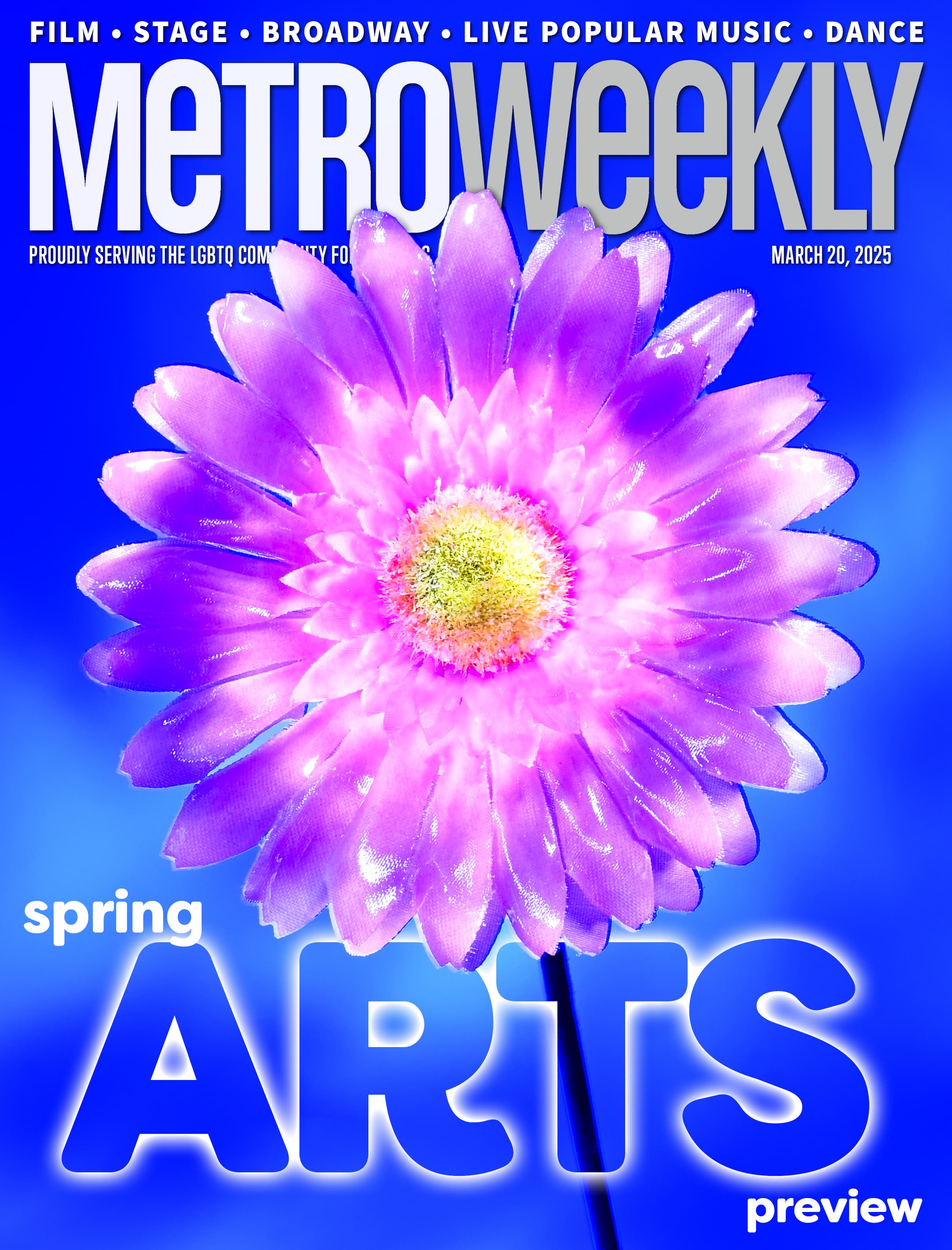
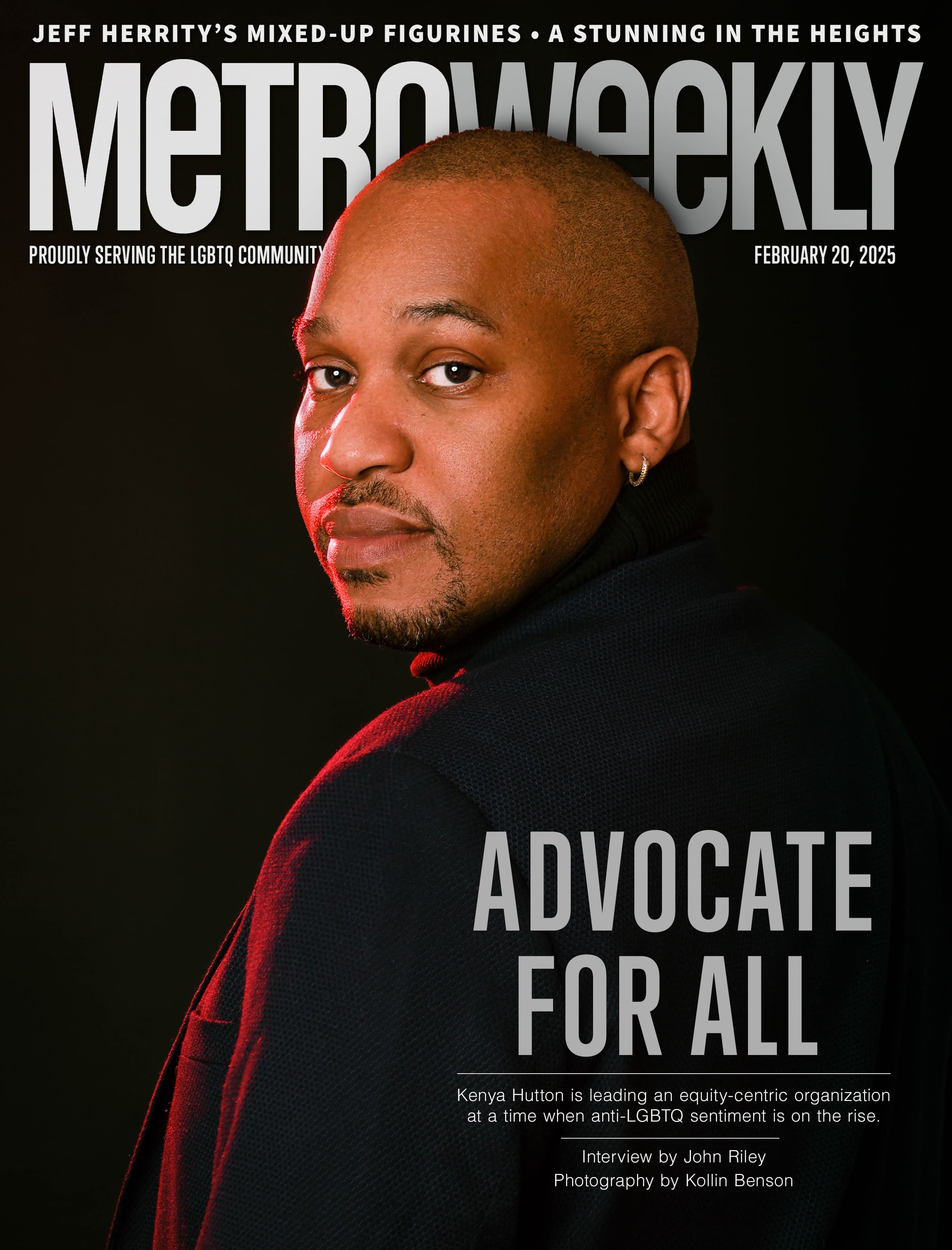
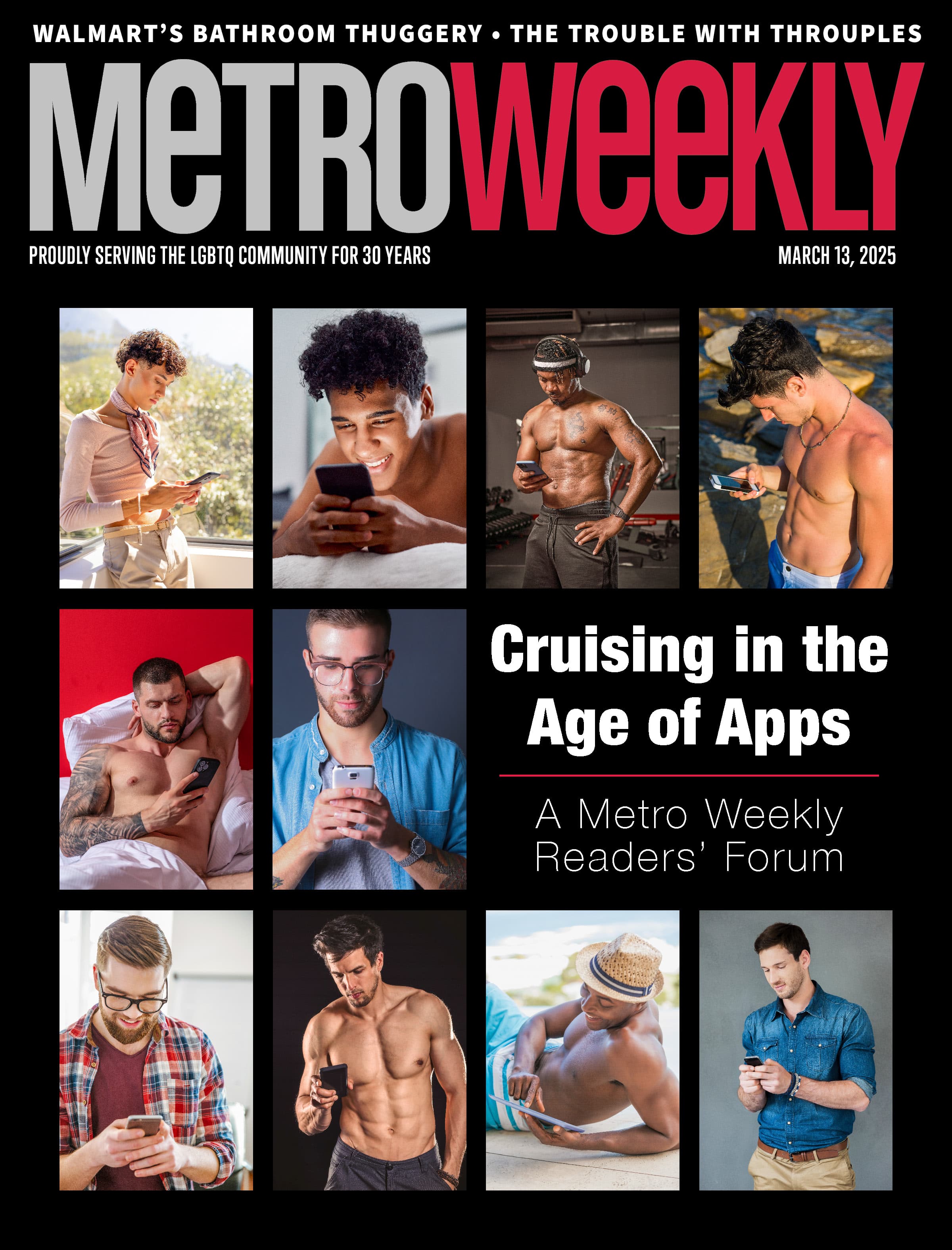















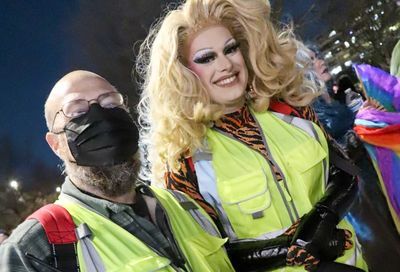
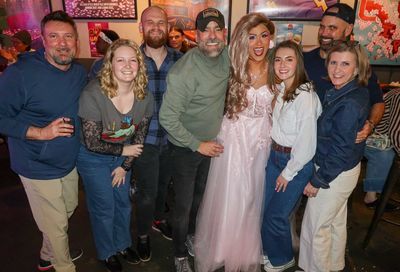
You must be logged in to post a comment.